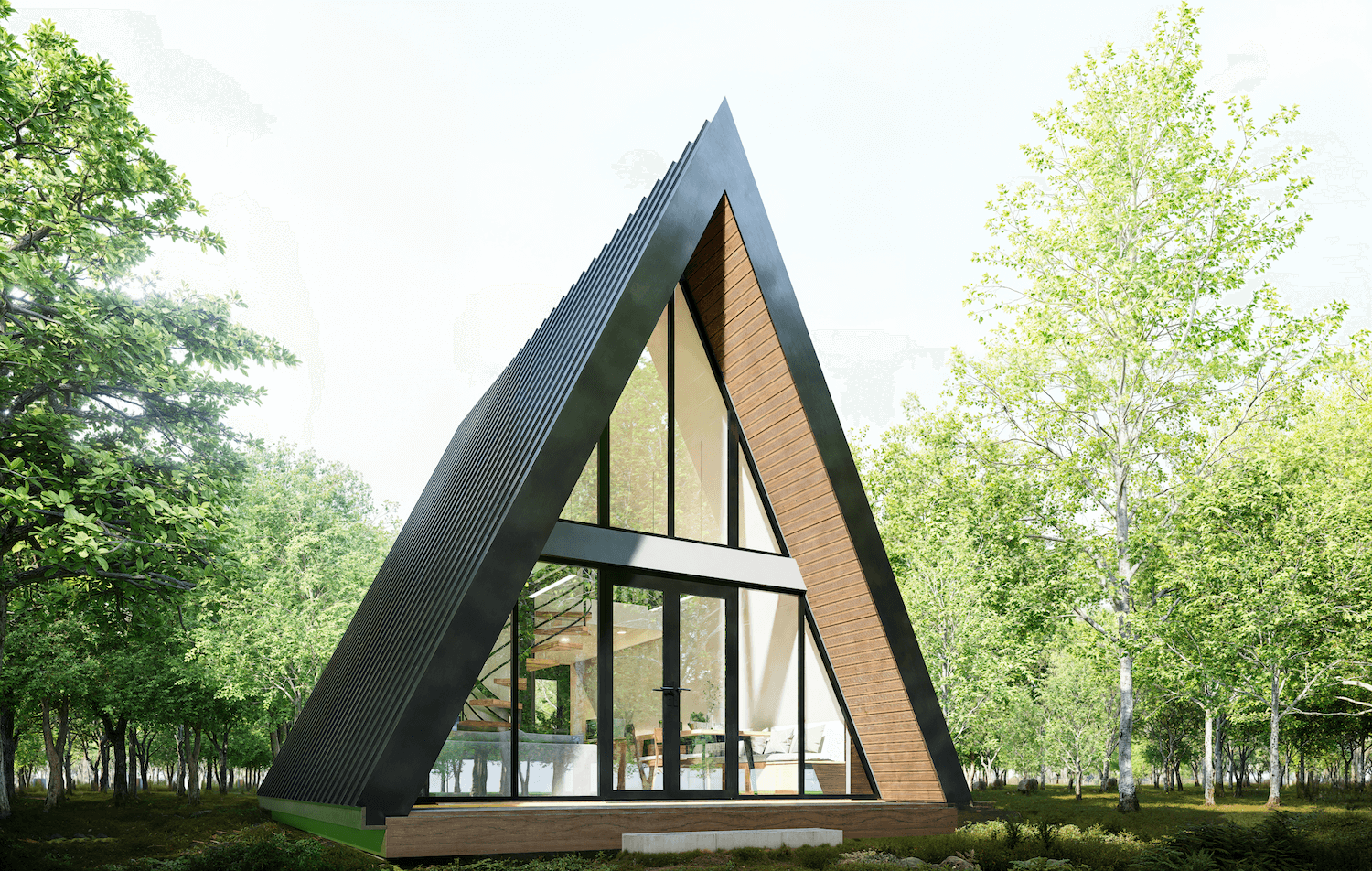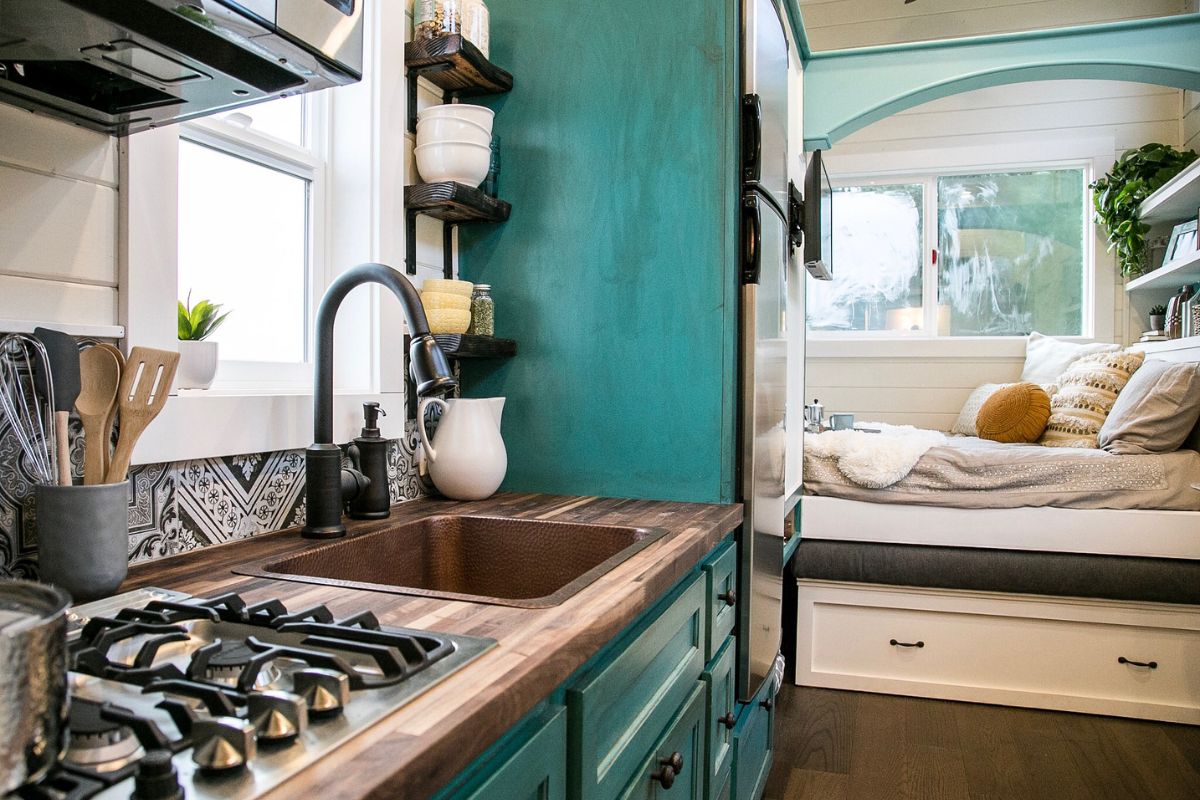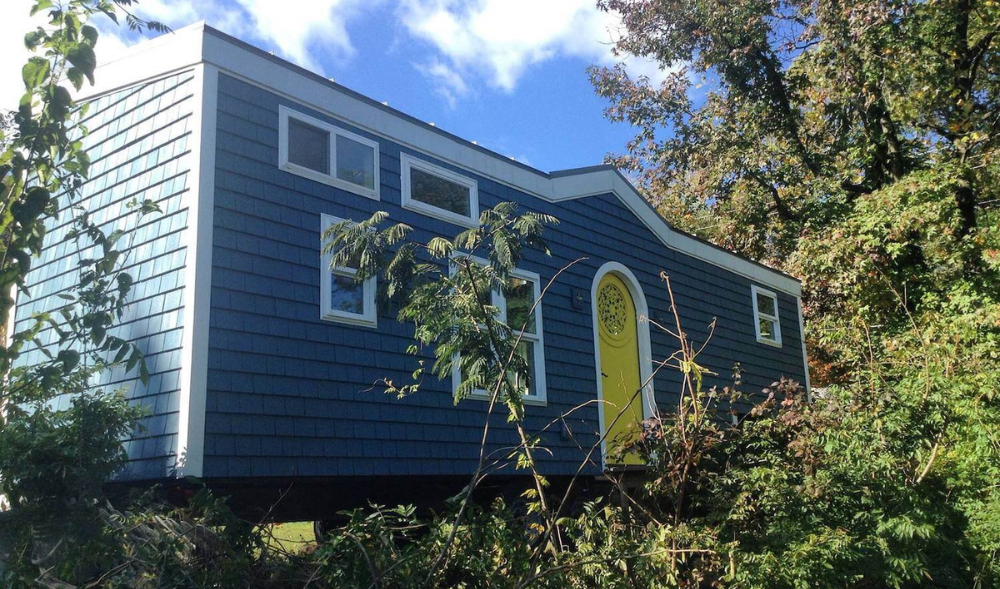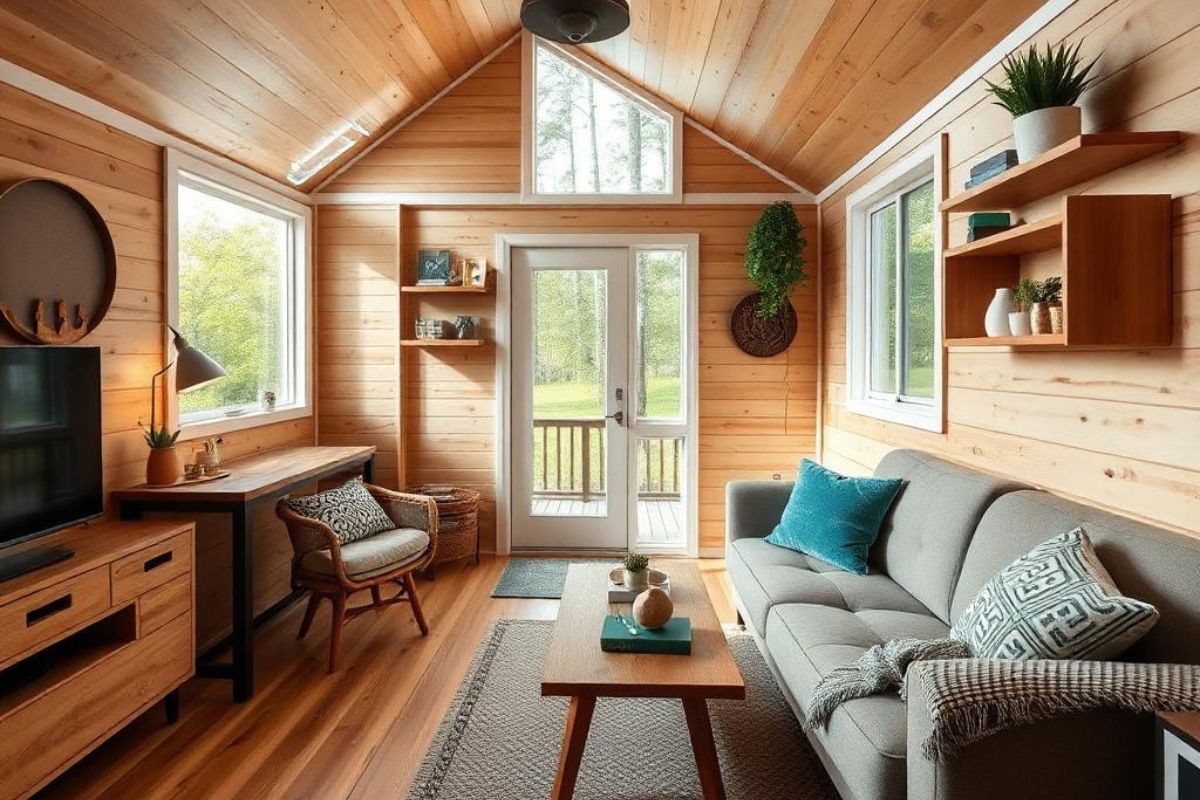Home size carries real costs and real tradeoffs. Bigger rooms feel impressive, yet they demand more money, energy, and time. Small homes, including tiny houses, trim those burdens and push design to work smarter. The right choice depends on what you value, the way you live, and how you plan to use your savings.
You can see the range anywhere buyers gather. Listings for San Miguel de Allende homes for sale include compact casitas and sprawling estates. Drill down to homes for sale in San Miguel de Allende Centro, and you will spot compact footprints with premium locations. The same pattern appears in many cities. Square footage competes with location, budget, and lifestyle. This guide walks through the economics so you can size a home with confidence.
Price Per Square Foot Can Mislead
Price per square foot looks tidy on paper. It helps compare rough value across similar homes. Yet it hides the most important detail. You do not live in a price ratio. You live in rooms. If an extra 400 square feet falls into hallways and underused corners, that ratio stops helping you.
Focus on livable square footage. Count the spaces you will use daily. A well-planned 600 to 900 square feet can beat a poorly planned 1,400. Ask what the next 100 square feet buys you. A separate office makes sense. A second formal living room that sits empty does not.
Costs also scale unevenly. Kitchens and baths cost far more per foot than bedrooms. When you compare homes, track how many high-cost rooms appear. A smaller home with a single high-spec kitchen can outclass a bigger home with two average ones.
The Opportunity Cost of Extra Space
Every extra dollar in a mortgage cannot work elsewhere. Money locked in floor area cannot compound in savings, trim debt, or fund travel and education. Run a simple check. Take the price gap between the larger home and the smaller option. Apply a conservative return and project five or ten years. The difference often pays for major goals.
Time carries a cost too. Larger homes ask for more cleaning, organizing, and maintenance. That time comes from weekends and evenings you could spend on health, family, or work you enjoy. Many tiny-house owners cite time freedom as the largest gain. They trade space they barely use for days they fully enjoy.
Opportunity cost also touches risk. Smaller mortgages give you options in a downturn. You can ride out slow periods, shift jobs, or take a sabbatical without panic. Flexibility has value that does not show up in glossy brochures.

Energy and Utilities Grow With Volume
Energy loads track volume, surface area, and leakage. More rooms mean more air to heat and cool. More walls and windows mean more places for heat to exit or enter. A compact envelope loses less and costs less to run.
Small homes reward thoughtful envelopes. Insulation, tight air sealing, and high-performance windows go further when the shell is modest. You can often reach comfort with a small heat pump, a ceiling fan plan, and good shading. Those choices reduce bills and noise. They also cut the size of solar systems or backup power you might need.
Water and hot water follow the same pattern. Shorter pipe runs waste less. A single efficient bathroom and a compact on-demand heater can outclass a large tank serving multiple distant baths. Design reduces use before technology tries to fix it.
Taxes, Insurance, and Fees Add Up
Property taxes scale with assessed value. The bigger, newer, or more outfitted the home, the higher the base. Insurance follows value and risk. More area and more expensive finishes lift premiums. Location can raise them again if fire, wind, or flood risks apply.
Common charges matter in shared communities. HOA and condominium fees often tie to unit size and amenity sets. Pools, elevators, and staffed entrances look nice at first glance. They also push monthly costs upward for years. A smaller, simpler home on a quiet street can carry a much lighter fixed nut.
Tiny-house owners enjoy even lower fixed costs, especially on owned land or in well-run villages. Budget the stand costs too. Pad, utilities, waste handling, and local permits shape the true monthly figure.

Maintenance Does Not Scale Gently
Roofs, exterior paint, flooring, and appliances wear out. Larger homes have more of each. You replace more square feet and more fixtures over time. A realistic reserve keeps the surprise factor down. Set aside a small percentage of the value per year for upkeep and capital items. Larger homes will demand more of that reserve, year after year.
Complex floor plans multiply edges and joints. Every transition is a place for failure. Simpler plans with tight footprints reduce potential leaks, cracks, and squeaks. Tiny houses exaggerate this advantage. Fewer systems, fewer places to fail, faster fixes.
DIY maintenance also scales. You can clean a small home top to bottom in under an hour. That saves money and keeps your space fresh. A larger home often needs outside help. Add those recurring invoices to the total cost of living.
Furnishing and Finishes Consume Budgets
Space begs to be filled. Sofas, rugs, art, and storage add up fast. A second living area needs another full set. Guest rooms invite beds and linens. The cost hides in many small purchases that arrive over months.
Tiny homes flip the script. You buy fewer pieces and spend more per piece. One great sofa. One perfect table. Better materials, longer life, and less visual clutter. The result feels richer for less money because you edit hard and choose carefully.
Kitchens show the same math. One high-quality range and a compact run of cabinets can beat two mediocre kitchens. Measure storage needs, then design for exact capacity. Right-sized storage ends the cycle of buying bins to hold bins.
Land, Location, and Daily Travel
Price spreads reflect land value first. A compact home on a strong block often outperforms a larger home on the fringe. Short walks save time and money. Transit access reduces car dependence. Commutes shrink. Those savings compound through lower fuel, service, and depreciation.
Small footprints unlock premium sites. Narrow lots, infill parcels, and accessory dwelling units fit where larger homes cannot. You gain light, views, and access without ballooning square footage. Many buyers would rather own a smaller house in the best spot than a larger one far away.
Travel patterns change costs, too. Short trips encourage fresh food, local gyms, and shared culture. Long commutes add stress and push spending to cars and takeout. Home size influences more than the mortgage.

Financing and Appraisal Realities
Lenders favor predictable collateral. Standard single-family homes in average sizes glide through underwriting. Huge custom homes and small homes can bump into extra scrutiny. Tiny houses on wheels sit in their own lane and may require specialized financing.
Appraisals echo market norms. A huge bump in size does not always lift appraised value linearly. At some point, extra square feet return less per foot than the first thousand did. The opposite can also apply. Homes that fall far below local averages may need strong comps to satisfy the appraiser, even if they function beautifully.
Plan for conservative loan assumptions. Keep reserves healthy. If a lender undervalues a property, you can still close without stress. That safety margin fits the tiny-house mindset well.
Resale, Liquidity, and Timing
Bigger buyer pools mean faster sales. Mainstream sizes sell to more people, which shortens time on the market. Large homes attract a thinner set of buyers. Tiny homes also narrow the pool unless the location offsets size.
Design quality smooths resale. Smart layouts, daylight, storage tuned to real needs, and durable materials pull buyers across size lines. A 900 square foot home that lives like 1,200 feels rare. A 3,500 square foot maze that lives like 2,400 feels dated.
Market cycles amplify the point. During tight credit periods, smaller mortgages move first. In hot cycles, trophy homes fly but cool fastest on the way down. Size links to volatility. Right-sizing lowers drama when you choose to sell.
Lifestyle Fit and Space Efficiency
Square footage does not create comfort. Fit does. Map daily routines. Morning coffee. Work calls. Exercise. Guests. Quiet time. Then design rooms to serve those moments with minimal waste. Pocket doors, built-in seating, and wall beds turn one room into three.
Multi-use zones shine in tiny homes. An office nook folds into a media wall at night. A dining table doubles as a project bench with hidden power. Storage hides in platforms and stairs. Every inch works. That efficiency feels luxurious because nothing fights you.
Pets, hobbies, and kids need planning, not vast rooms. Durable finishes near entries. Wash stations near doors. Lockable cabinets for tools or art supplies. When the plan respects real life, space feels generous.
Environmental and Community Impact
Smaller homes conserve materials and reduce waste. They heat and cool with less energy and welcome smaller solar arrays. They leave more open ground for trees, gardens, and permeable surfaces that handle rain well. The footprint shrinks, and the city or town gains.
Neighborhoods benefit too. Compact homes support gentle density. More neighbors walk, meet, and support local shops. Services operate efficiently when trips grow short. A tiny-house village or a street of compact homes can lift street life without strain.
Healthy buildings matter as well. Low-VOC finishes, daylight, and ventilation come easier in a smaller shell. You can afford to do the envelope right when you do less of it. Health and budget line up.
A Practical Sizing Method
Start with needs, not wants. List daily functions and must-have rooms. Cap the count. Then set a square-foot target for each room and add a small circulation factor. You will land on a total that fits the way you live, not a number pulled from habit.
Price both a larger and a smaller option. Calculate mortgage, taxes, insurance, utilities, maintenance, and furnishings. Add the opportunity cost of capital tied up in extra square feet. Let the totals guide the choice.
Finally, test the plan. Tape layouts on a floor, or tour staged models with a measuring app in hand. If the smaller plan supports your routine without friction, you have your answer.
Bigger Can Impress. Smaller Can Enrich
The best size delivers comfort, control over costs, and freedom in your calendar. When a home matches the way you live, you stop paying for air you do not use and start investing in time you truly enjoy.






Share: